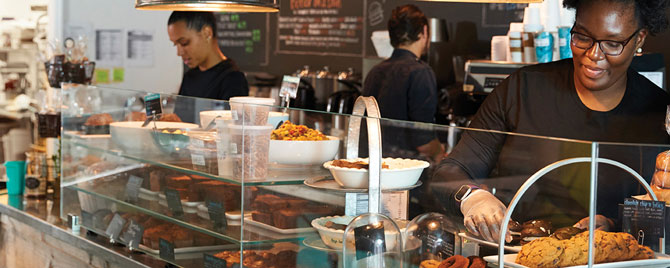Making credit accessible to small business owners of color and those in underserved communities is crucial to our country’s economic recovery from COVID-19, according to presenters at a recent Federal Reserve Bank of San Francisco event focused on equitable access to small business credit. Throughout the event, we heard perspectives from small businesses, researchers, and lenders, who discussed how small business owners could get more equitable access to credit. Here’s what we learned.
Partner and collaborate
“This won’t be something that any one group can do alone,” said SF Fed President Mary Daly during her remarks. “It’s really going to take a partnership, a collaboration between the public sector and regulators.”
Access to credit has been a lifeline for small businesses enduring the economic impact of COVID-19. President Daly noted that small businesses in underserved communities were hit particularly hard because they lacked equal access to recovery funds and other lending facilities.
“I don’t think we have a shortage of ideas, we have a shortage of access to funding, and that’s what this has been about: learning how we can improve that situation so it’s more equitable,” she said.
Right-size risk assessments
Keynote speaker Sheila Bair, former chair of the Federal Deposit Insurance Corporation and current chair at Fannie Mae, emphasized modifications to credit scores to help lenders assess risk for prospective borrowers. She said changes to lending formulas would show that people living in underserved communities were not likelier to default.
“We recognize that there are other ways to show that you are a person who understands how to manage finances and how to make a monthly mortgage payment. And that is through positive rental data,” Bair said. “Fannie Mae is accepting that now, and our analysis shows that of loans that have been turned down in the past, if we had included that positive rental data, we would’ve actually had a 17% uptake in our approval rates. So we’re excited about this.”
Leverage technology
Chris James, president and CEO of the National Center for American Indian Enterprise Development, noted that a lack of adaptation among larger lenders has hindered his community’s ability to access those institutions’ credit offerings.
“We still are seeing a lot of larger financial institutions not necessarily adapting with technology or understanding how things have changed [during the pandemic],” he said during a panel featuring small business borrowers. “For just one quick example, wet signatures. I find that the smaller community-based financial institutions are adapting to a better way for identification and risk management with their borrowers than some of the larger institutions. However, the larger institutions sometimes have the most loans.”
Listen and learn
A major thrust of this event was to listen to and learn from the direct experiences of key stakeholders, which, importantly, can surface ideas that lead to action. And the conversation does not end here.
In her closing remarks, President Daly said, “If we can change our mindset so that we’re saying, ‘How do we get to yes? How do we get to yes for these communities?’ then I know we’ll find solutions that are going to push the envelope forward, and we’re going to end up a year from now, five years from now with a better outcome.”
For more, watch the recordings of Equitable Access to Small Business Credit.
Photo credit: monkeybusinessimages via Getty Images.
You may also be interested in:
- Community Development Corporations: Preserving Cultural and Economic Space through COVID-19
- What We’ve Learned about Fintech, Racial Equity, and Financial Inclusion
- Three Takeaways from “Addressing Climate Risk through Equitable Community Development” Webinar
- Creating an On-Ramp for Financial Inclusion
- $3 Trillion a Year and Growing: Potential Economic Gains from Equity
The views expressed here do not necessarily reflect the views of the management of the Federal Reserve Bank of San Francisco or of the Board of Governors of the Federal Reserve System.
